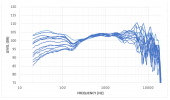Hi
I'm fairly new in the game and have been reading a lot of reviews lately in particular of the DCA Stealth that I'm interested in (for sound quality obviously, but just as much for the looks, build quality and portability). If I could just go listen to the cans that's what I would do but that isn't an option where I live.
One thing I've stumbled upon when people review the DCA Stealth is that they say it sounds clinical/analytical. I guess that can be both a good and a bad thing but overall not very exciting.
So my question is if that is something that can be improved with EQ? Is it fair to assume that people review headphones without EQ unless otherwise noted so they're essentially commenting on the "out of the box tuning"?
I have tried playing around with EQ on my HD660s and I feel like with EQ I can make them sound both more exciting and less exciting. So my assumption here would be that using EQ could give the Stealth a bit more "edge" and make them sound less clinical/analytical.
Thanks!
I'm fairly new in the game and have been reading a lot of reviews lately in particular of the DCA Stealth that I'm interested in (for sound quality obviously, but just as much for the looks, build quality and portability). If I could just go listen to the cans that's what I would do but that isn't an option where I live.
One thing I've stumbled upon when people review the DCA Stealth is that they say it sounds clinical/analytical. I guess that can be both a good and a bad thing but overall not very exciting.
So my question is if that is something that can be improved with EQ? Is it fair to assume that people review headphones without EQ unless otherwise noted so they're essentially commenting on the "out of the box tuning"?
I have tried playing around with EQ on my HD660s and I feel like with EQ I can make them sound both more exciting and less exciting. So my assumption here would be that using EQ could give the Stealth a bit more "edge" and make them sound less clinical/analytical.
Thanks!

